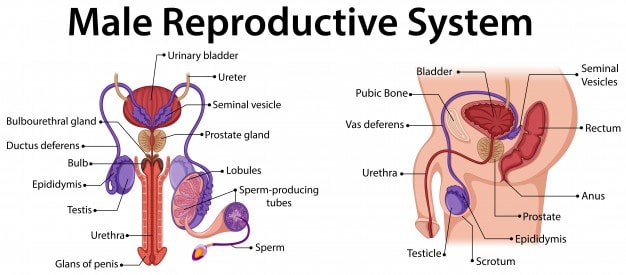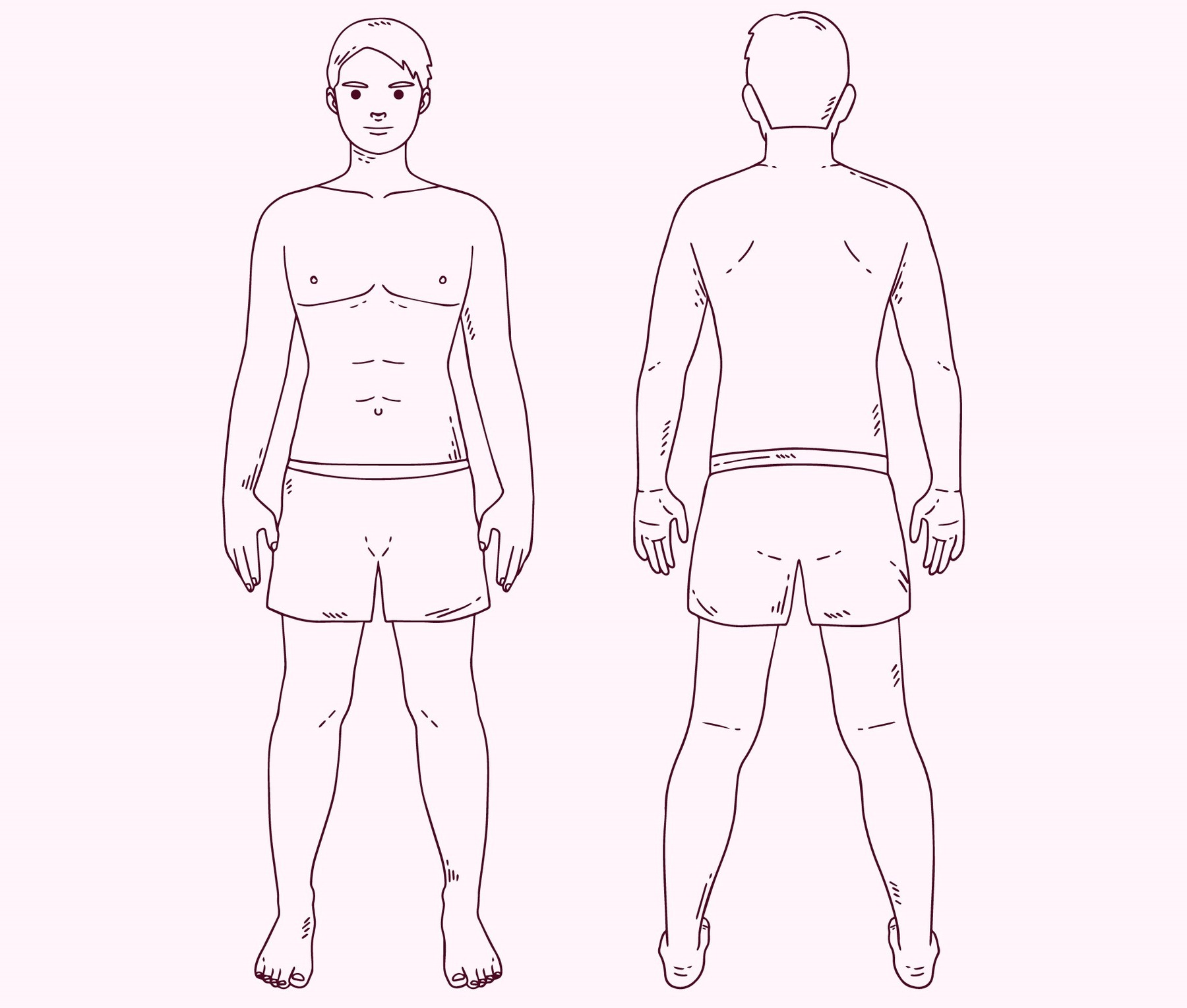The male sexual anatomy or male genital system is divided into two categories: the internal parts which include the seminal vesicles, testes, vas deferens, epididymis, prostate, ejaculatory duct, etc.; and the external parts which include the penis, foreskin, urethra, and scrotum.

Internal Sex Anatomy
Testes
The male sexual glands, testes are the two oval shaped organs that produce sperm and testosterone. Within each testis is a kilometer of ducts called the seminiferous tubules, the organs which generate sperm. Each testicle produces nearly 150 million sperm every 24 hours!
Epididymis
The epididymis is the holding area where sperm produced by the seminiferous tubules mature. The sperm wait here until ejaculation or for when sperm gets released during sleep–also known as wet dreams or nocturnal emission.
Vas Deferens
The ducts leading from the epididymis to the seminal vesicles. These are the tiny muscular tubes that are cut during the procedure known as vasectomy.
Seminal Vesicles
The seminal glands produce semen, a thick and slippery fluid that activates and protects the sperm after it has left the penis during ejaculation.
Prostate Gland
Also produces a fluid that makes up the semen. The prostate gland also squeezes shut the pathway to the bladder, which prevents urine from mixing with the semen and disturbing the sperm.
Corpora Cavernosa
The corpora cavernosa are the two spongy bodies of erectile tissue on either side of the penis which fill up with blood from arteries in the penis, thus causing erection.
Ejaculatory Ducts
The path through the seminal glands which semen travels during ejaculation.
Cowper’s Glands (Bulbourethral Glands)
The Cowper’s glands secrete a small amount of pre-ejaculate fluid prior to orgasm. This fluid neutralizes the acidity within the urethra itself and helps lubricate the penis before sex.
External Sex Anatomy
Penis
The penis is made of two parts: the shaft (the main part) and the glans (the tip, sometimes called the head). Semen and urine are discharged from the penis.
The penis is made of spongy material that fills up with extra blood (an erection) when sexually aroused. The head of the penis is filled with thousands of nerve endings, making it very sensitive. The penis continues to grow as does the rest of the body. Size varies from person to person.
Foreskin
A roll of skin which covers the head of the penis. It is rich in nerve endings. The skin on the end of the penis retracts during erection. The removal of the foreskin is called circumcision and changes the appearance of the penis. For men who have not been circumcised, it’s important to clean beneath the foreskin of the penis regularly.
Urethra
The opening at the tip of the penis to allow the passage of both urine and semen.
Scrotum
The scrotum is a sac that hangs behind and below the penis, and contains the testes (testicles) and the epididymis. The scrotum’s primary function is to maintain the testes at approximately 34°C, which is a slightly cooler temperature than the rest of the body and is the temperature at which the testes most effectively produce sperm. The scrotum pulls the testicles closer to the body if it is cold and lowers away from the body if it is hot.
Sources:
- Male sexual anatomy: Penis, scrotum and testicles. Planned Parenthood. (n.d.). https://bit.ly/4754gVB
- WebMD. (n.d.). The male reproductive system: Organs, function, and more. WebMD. https://bit.ly/4734NaQ
- Image by brgfx on Freepik




Bakit po kkapag nag mamasturbate ako di po tumatalsik ?
Hi Mjay! Normal lang iyan. Maaaring hindi lang sapat ang pagpigil mo o kaya’y nagmamadali kang mag-ejaculate. Pero kung wala ka namang nararamdamang pananakit o kung ano man, hindi na ito kailangan pang ipatingin sa doktor.